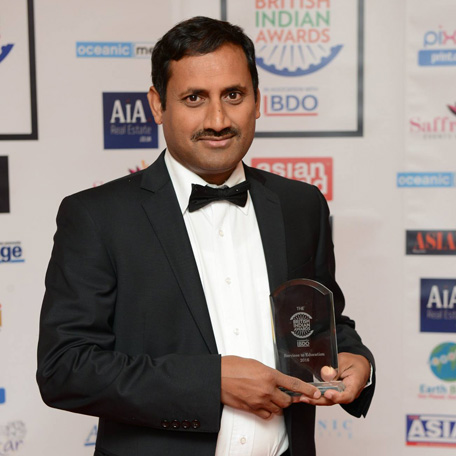Dr F Almonacid, University of Jaen, Spain
Dr Eduardo Fernández
Sundaram, S, Fernández, E, Mallick, T, Almonacid, F. "Effects of spectral coupling on perovskite solar cells under diverse climatic conditions" (2015), Solar Energy Materials and Solar Cells
Solar energy: Incorporating clean technologies
Solar energy: Incorporating clean technologies
A team of experts from the University of Exeter is examining new techniques for generating photovoltaic (PV) energy – or ways in which to convert light into power – more cost efficiently.
Professor Tapas Mallick leads a research team at the Environment and Sustainability Institute (ESI), who are focused on applied solar energy and how this may be incorporated into building, used as energy storage and integrated with other clean technologies. Tapas is interested in advanced solar energy engineering and heat transfer for renewable energy systems.
The global PV market has experienced rapid growth in recent years due to renewable energy targets and CO2 emission controls.
However, current, widely-used commercial methods employed to generate PV energy, such as using silicon or thin film based technologies, are still expensive as they are processed through vacuum-based techniques. The development of technologies and the invention of new materials could lead to the reduction of PV energy generation costs.
Now, the team of scientists has found that one such material, a mineral called perovskite, could hold the key to cheaper PV energy generation in wider climates.
Crucially, the team conducted studies with perovskite in Alta Floresta (Brazil), Frenchman Flat, (USA) , Granada (Spain), Beijing (China), Edinburgh (UK) and Solar Village (Saudi Arabia), and confirmed its efficiency in converting light to power in a range of atmospheric conditions, rather than just under direct sunlight.
Professor Mallick said: “This research offers the potential for significant progress to be made in finding cheaper ways to generate PV energy. The results, which show how perovskite devices work under real operating conditions, will lead to our understanding them better, which will benefit industrial-scale production processes."
Dr Senthilarasu Sundaram, also from the ESI, added: “The research is questioning the perovskite material’s ability to produce stable solar cells under versatile climatic conditions. The obtained results are very crucial in terms of perovskite solar cell growth and understanding how to make better devices.”
Professor Mallick was recently honoured for his services to education at a prestigious national awards ceremony organised by the UK’s Indian community. He said:

I was very surprised and extremely honoured to win this award, particularly as I was shortlisted alongside some very high profile contenders from other top UK universities. I was born and brought up in a remote village in India, where there was no electricity during my schooling, so being educated in a high profile educational institute, going on to work for one of the top universities in the UK and receiving this award have all been totally unexpected. I am grateful to all of those who are associated with this journey.
